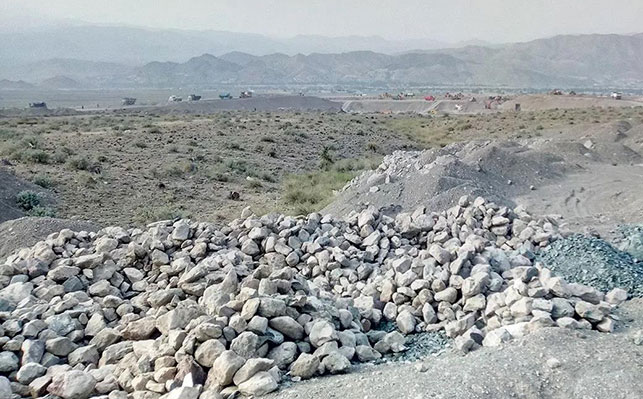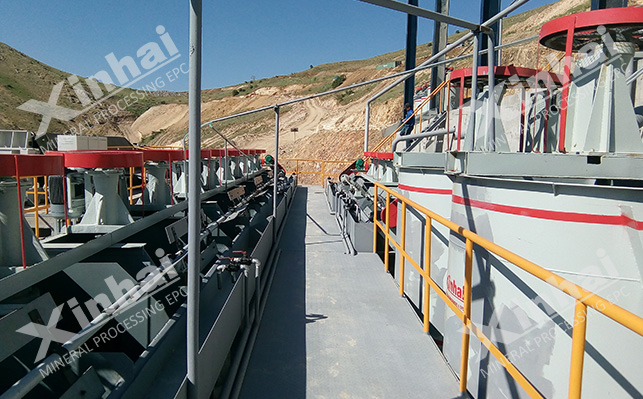The ore types of low-grade copper mines are extremely diverse, including various types such as porphyry and volcanic rock. The composition of metal minerals and gangue minerals in these ores is complex. The proportion of metallic minerals is usually low, and the copper content of low-grade copper mines is generally low. This type of copper mine with extremely low copper content and complex ore composition brings great difficulties to mineral processing. It is of great significance to break through this difficulty and solve the problem of mineral processing of low-grade copper mines. The following will provide a detailed introduction to several main low-grade copper ore beneficiation processes.

(1) Flotation of Copper Sulfide Ore
The flotation of copper sulfide ore mainly relies on efficient collectors and frothers. Common collectors include Z-200 and ester 105, which are non-toxic and environmentally friendly additives. The flotation process can achieve preliminary and efficient enrichment of copper concentrate in the coarse sweeping stage and secondary enrichment of copper concentrate in the selection process by adjusting the dosage of flotation reagents and selecting appropriate flotation equipment.
The flotation process can effectively improve the copper recovery rate and concentrate grade by optimizing the reagent ratio and equipment selection when processing sulfide copper ore. This process is suitable for processing coarse-grained copper ores, especially for processing low-grade copper ores with high mud content, and the effect is significant.
(2) Flotation of copper oxide ore
The flotation of oxidized copper ore usually uses collectors such as fatty acids, amines, chelating agents neutral oils, etc. Copper oxide minerals are first sulfided, then copper chelating agents are added to create a stable oleophilic mineral surface, which is then covered with a neutral oil emulsion to create a strongly hydrophobic floatable state.
The flotation process of oxidized copper ore is complex, requiring multi-step operations and the coordinated use of multiple reagents. This process can effectively separate copper minerals from gangue minerals when processing low-grade oxidized copper ore, but the process flow is long, and energy consumption and cost are high.

(1) Acid leaching method
The acid leaching method is suitable for treating oxidized copper ores containing acidic gangue minerals, and sulfuric acid is commonly used as a leaching agent. After extraction and enrichment of copper sulfate solution, cathodic copper is usually produced by electrodeposition process. The acid leaching method has the advantages of simple equipment, low investment, and fast results in the treatment of low-grade copper oxide ore. However, this process requires high acidity of the ore, and the treatment of wastewater generated during the acid leaching process is complex.
(2) Heap leaching method
The heap leaching method is to extract ore and place it in an empty area underground or in a waste rock area on the surface for leaching operations. Suitable for processing copper containing waste ores, tailings, and lean ores that are not crushed or roughly crushed. The heap leaching process has a simple process flow and low production cost, but it needs to overcome problems such as poor permeability and poor flow of leaching solution. This process has significant advantages in large-scale processing of low-grade copper oxide ore.
(1) Magnetic separation method
Magnetic separation method utilizes the magnetic differences of minerals to separate useful copper minerals from gangue through magnetic force. Commonly used for the selection of magnetic copper ore. Magnetic separation method can effectively improve the grade of copper concentrate when processing copper ore containing magnetic minerals. However, this process requires high magnetic properties of the ore and has limited effectiveness in processing low-grade copper ore.
(2) Electric selection method
The electric selection method utilizes the differences in the electrical properties of different minerals in an electric field to separate useful copper minerals from waste rock through the action of electricity. Suitable for processing fine-grained or trace copper containing non-ferrous copper ores. The electric selection method has the characteristics of high efficiency and energy saving in processing fine-grained copper ore. However, this process requires high precision and operating parameters of the equipment, and the effect is better when processing high-grade copper ore.
Jigs utilize the difference in mineral density to separate useful minerals from gangue in copper ore through water flow, heavy media, or other equipment. The reselection process is suitable for processing copper ores with larger particle sizes, especially for processing low-grade copper ores with high mud content, and the effect is significant. However, this process has low efficiency and high energy consumption when processing fine-grained copper ore.
The beneficiation process for low-grade copper ore mainly includes methods such as flotation, leaching, magnetic separation, electrostatic separation, and gravity separation. In practical applications, beneficiation tests should be conducted on low-grade copper ore first, and the beneficiation process should be determined based on the test results in order to avoid resource waste and achieve expected returns.